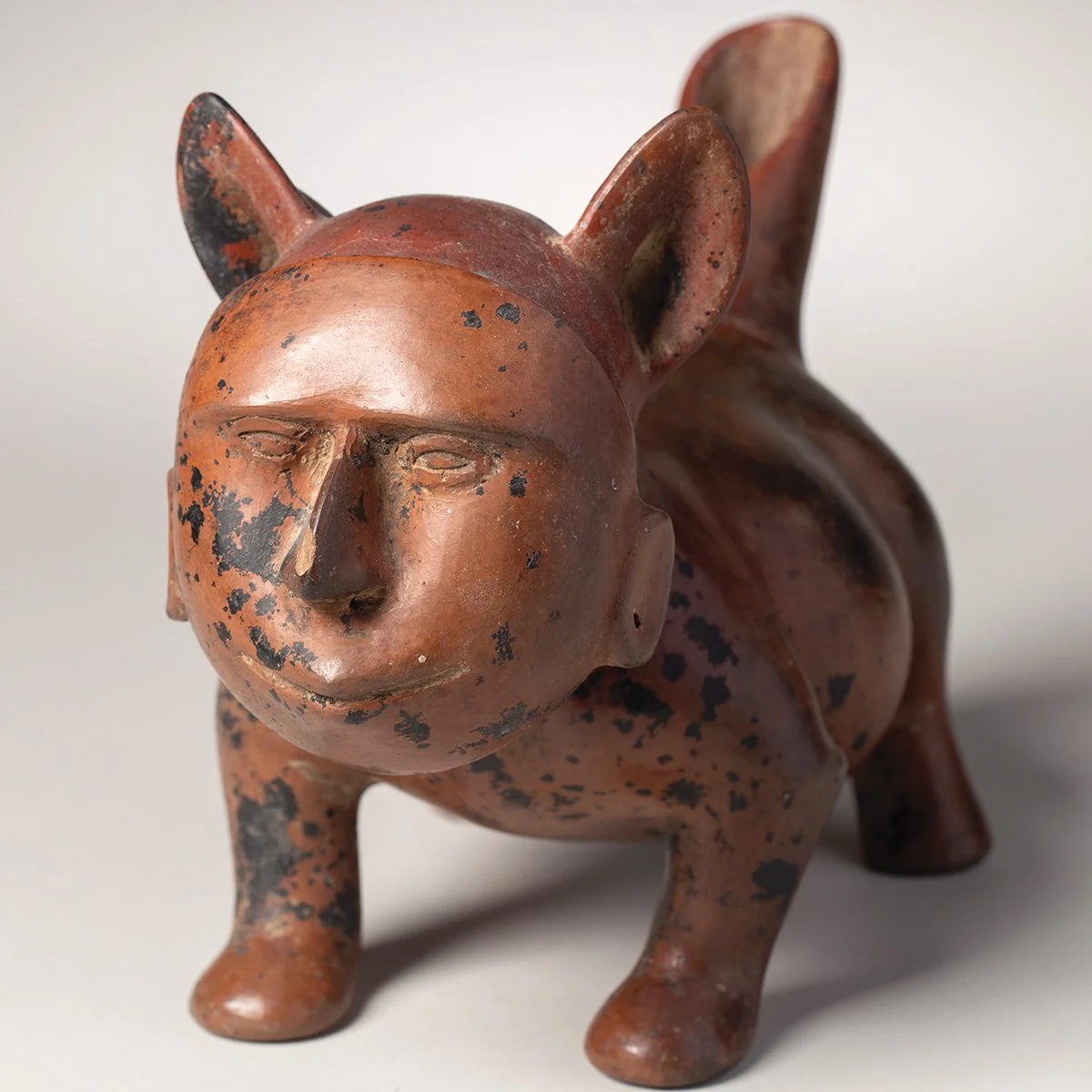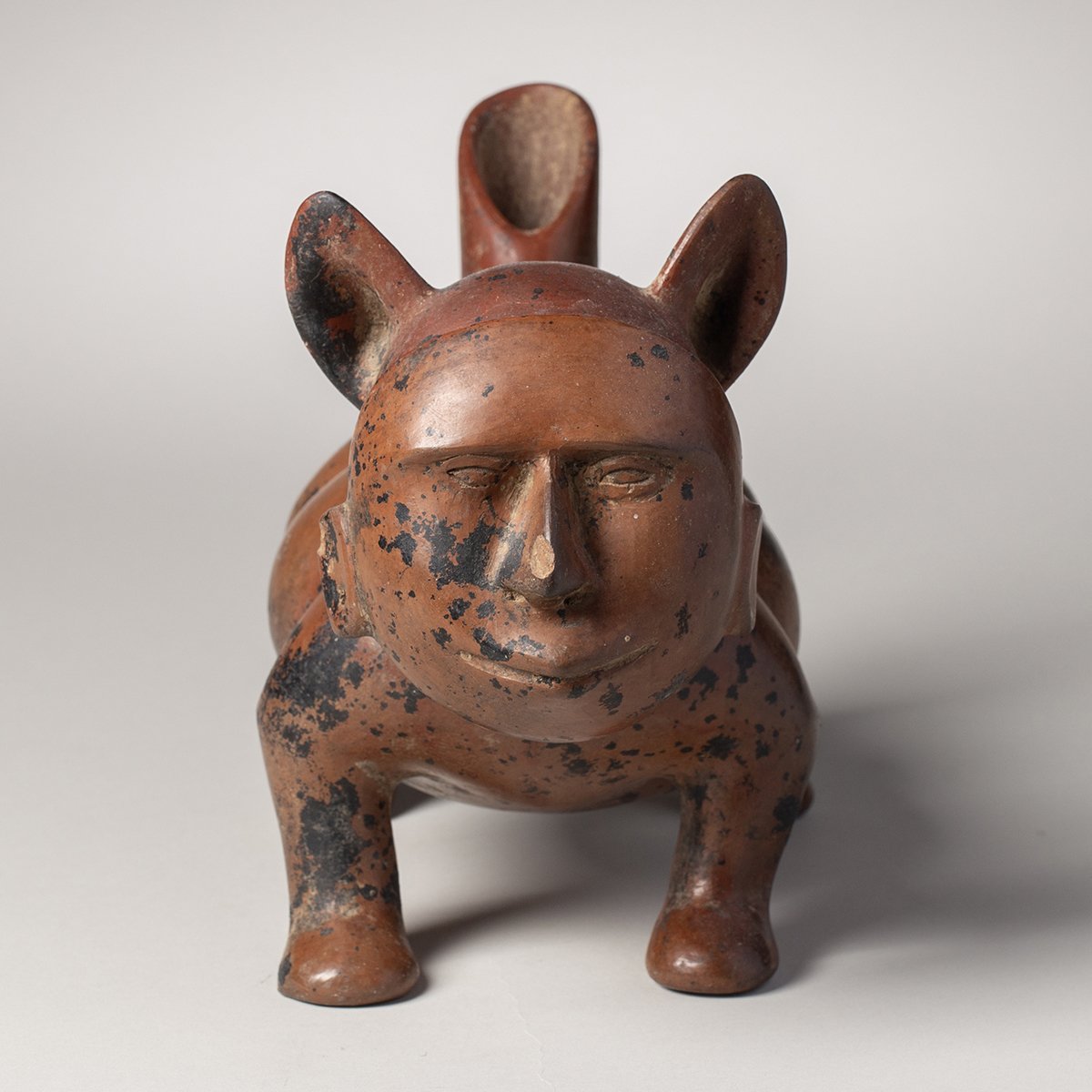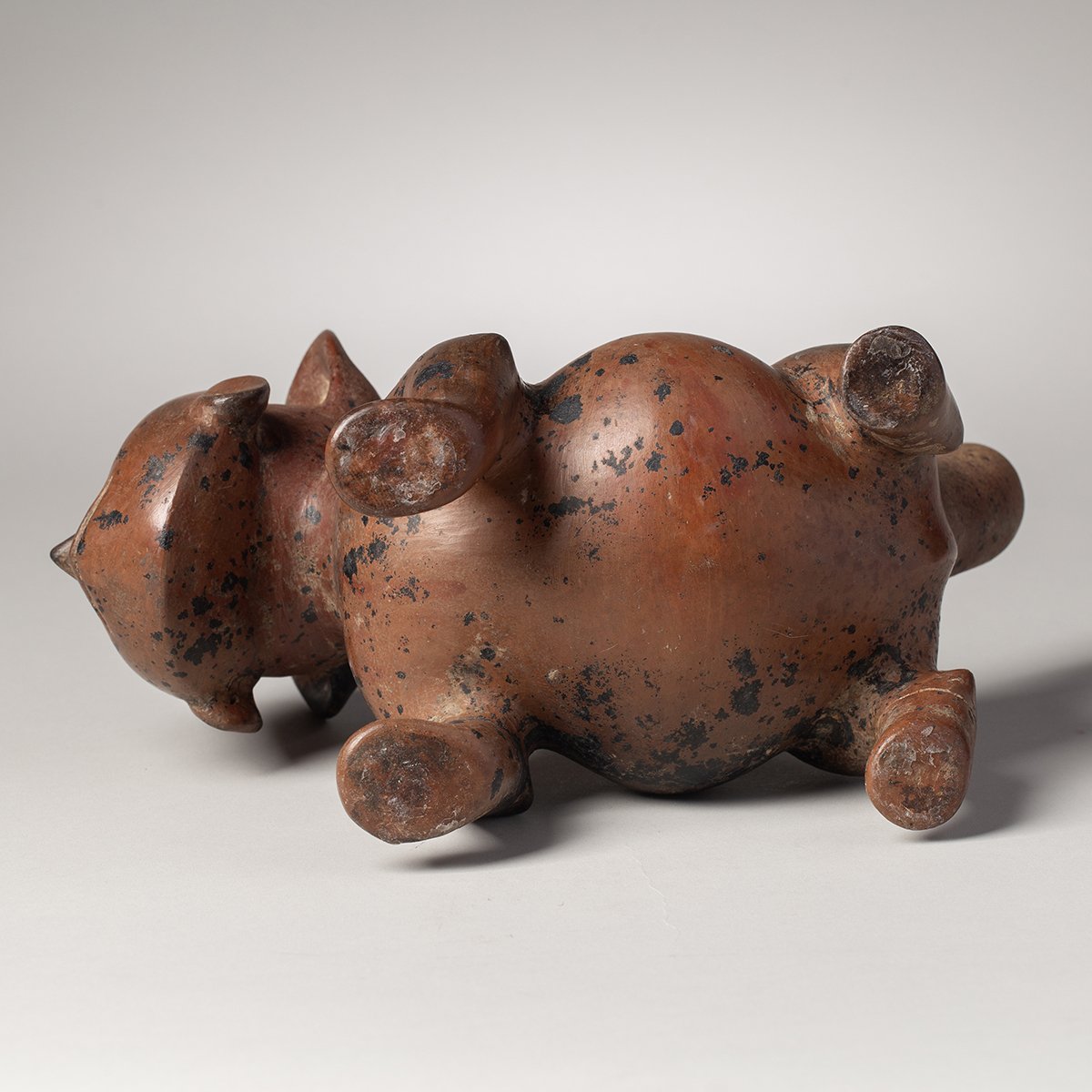 Image 1 of 7
Image 1 of 7

 Image 2 of 7
Image 2 of 7

 Image 3 of 7
Image 3 of 7

 Image 4 of 7
Image 4 of 7

 Image 5 of 7
Image 5 of 7

 Image 6 of 7
Image 6 of 7

 Image 7 of 7
Image 7 of 7








Important Colima Dog with Mask - SOLD
Mexico
100 BC - 250 AD
Provenance: Tony Berlant, Santa Monica, CA, prior to 1970
Many lively and expressive ceramic sculptures portraying small, plump, hairless canines, popularly known as Colima Dogs, have been discovered inside the elaborate shaft tombs of Northwestern Mexico. There, a culture known as Colima flourished for seven hundred years, between 300 B.C and 400 A.D. Geographically isolated in simple agricultural villages unaffected by the ebb and flow of more aggressive neighboring cultures, the Colima people developed a distinct and strictly localized art style, and advanced ceramic techniques. They created and utilized a wide variety of figurative ceramic vessels as an exclusive means of artistic and religious expression and achieved surprising mastery, placing them at the highest level within the panorama of ceramic traditions.
Dogs held a powerful and pivotal place in ancient Mesoamerican cultures, and the Colima believed them to be the companions of Xolotl, the god of the underworld, dutifully accompanying and guarding the souls of the dead as they traveled through the dangerous regions of the underworld. In life, the Colima people cherished their dogs also as daily companions and guardians of the home. Depicting the extinct hairless dog known as the Techichi, these remarkable ceramic dog sculptures were placed by mourners inside the inner chambers of the tomb alongside the deceased, to accompany and guard the soul in the afterlife. Masterfully portrayed with both evocation and affection, Colima ceramic dogs are unique in their realism, vivacity and lustrous modeling. As an important part of the burial tomb ensemble, the dog in life and death, remained the Colima’s most revered companion.
Mexico
100 BC - 250 AD
Provenance: Tony Berlant, Santa Monica, CA, prior to 1970
Many lively and expressive ceramic sculptures portraying small, plump, hairless canines, popularly known as Colima Dogs, have been discovered inside the elaborate shaft tombs of Northwestern Mexico. There, a culture known as Colima flourished for seven hundred years, between 300 B.C and 400 A.D. Geographically isolated in simple agricultural villages unaffected by the ebb and flow of more aggressive neighboring cultures, the Colima people developed a distinct and strictly localized art style, and advanced ceramic techniques. They created and utilized a wide variety of figurative ceramic vessels as an exclusive means of artistic and religious expression and achieved surprising mastery, placing them at the highest level within the panorama of ceramic traditions.
Dogs held a powerful and pivotal place in ancient Mesoamerican cultures, and the Colima believed them to be the companions of Xolotl, the god of the underworld, dutifully accompanying and guarding the souls of the dead as they traveled through the dangerous regions of the underworld. In life, the Colima people cherished their dogs also as daily companions and guardians of the home. Depicting the extinct hairless dog known as the Techichi, these remarkable ceramic dog sculptures were placed by mourners inside the inner chambers of the tomb alongside the deceased, to accompany and guard the soul in the afterlife. Masterfully portrayed with both evocation and affection, Colima ceramic dogs are unique in their realism, vivacity and lustrous modeling. As an important part of the burial tomb ensemble, the dog in life and death, remained the Colima’s most revered companion.
Mexico
100 BC - 250 AD
Provenance: Tony Berlant, Santa Monica, CA, prior to 1970
Many lively and expressive ceramic sculptures portraying small, plump, hairless canines, popularly known as Colima Dogs, have been discovered inside the elaborate shaft tombs of Northwestern Mexico. There, a culture known as Colima flourished for seven hundred years, between 300 B.C and 400 A.D. Geographically isolated in simple agricultural villages unaffected by the ebb and flow of more aggressive neighboring cultures, the Colima people developed a distinct and strictly localized art style, and advanced ceramic techniques. They created and utilized a wide variety of figurative ceramic vessels as an exclusive means of artistic and religious expression and achieved surprising mastery, placing them at the highest level within the panorama of ceramic traditions.
Dogs held a powerful and pivotal place in ancient Mesoamerican cultures, and the Colima believed them to be the companions of Xolotl, the god of the underworld, dutifully accompanying and guarding the souls of the dead as they traveled through the dangerous regions of the underworld. In life, the Colima people cherished their dogs also as daily companions and guardians of the home. Depicting the extinct hairless dog known as the Techichi, these remarkable ceramic dog sculptures were placed by mourners inside the inner chambers of the tomb alongside the deceased, to accompany and guard the soul in the afterlife. Masterfully portrayed with both evocation and affection, Colima ceramic dogs are unique in their realism, vivacity and lustrous modeling. As an important part of the burial tomb ensemble, the dog in life and death, remained the Colima’s most revered companion.

